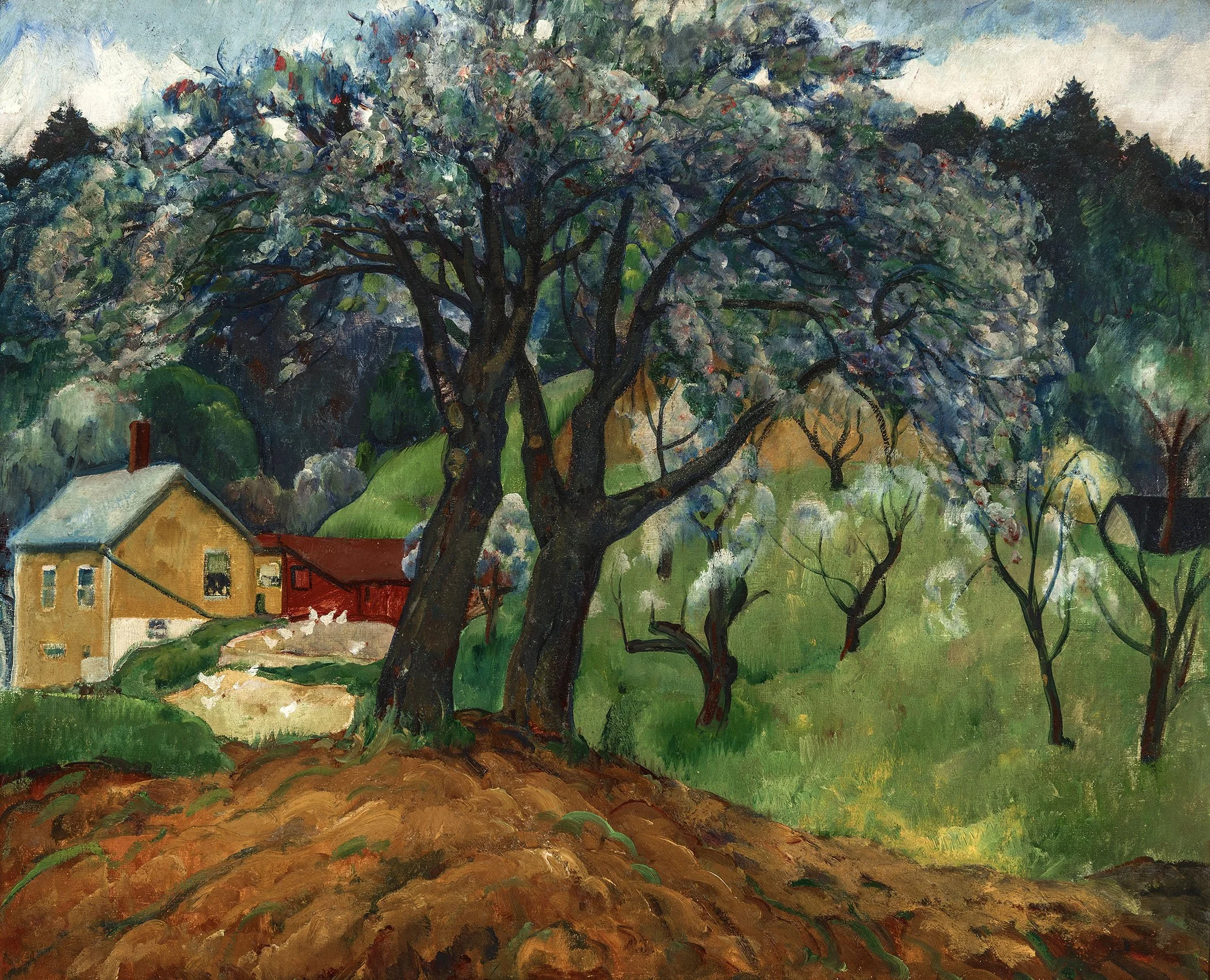LEON KROLL (1884-1974)
Available Work | Biography
Biography • Leon Kroll (1884-1974)
Leon Kroll was born in New York City in 1884. He studied art at both the National Academy of Design and the Art Students League. Kroll received a scholarship to study at the Byrdcliffe art colony in Woodstock the summer of 1906 and a National Academy scholarship to study in Europe in 1908. Kroll used the scholarship to travel to Belgium, Holland, and Germany the summer of 1908 before settling in Paris in the fall to study at the Académie Julian with Jean-Paul Laurens. Returning to New York in the fall of 1910, Kroll received his first one-man exhibition at the National Academy with 85 paintings.
Upon his return to New York, Kroll met George Bellows and was introduced to Robert Henri, John Sloan, and their post-Eight circle. Kroll was the only young artist of the group who had not studied with Henri and his National Academy training was considered anathema to the Eight’s founding, yet he was embraced by the group and featured in their exhibitions. Kroll’s popularity as an artist grew and his lush brushwork, exciting compositions, and Fauve palette gained him the opportunity to exhibit at the famous 1913 Armory Show, at which he sold all of his paintings.
Leon Kroll and George Bellows painted together on Monhegan Island in Maine in 1913 and returned to the Maine coast the summers of 1915 and 1916. Kroll was invited to Colorado to paint five portraits of the Travis family in 1917. While there, Kroll painted at least ten hours a day, using any spare time from the portraits as a chance to paint the surrounding Rocky Mountains. Already out west, Kroll joined George Bellows and Robert Henri in Santa Fe, New Mexico to paint the local scenery the summer of 1917. During the Teens, Kroll was fascinated by Cézanne and broke up his realist compositions into more geometrical forms.
In 1920 Kroll returned to Woodstock for the summer at the suggestion of George Bellows. In Kroll’s autobiography A Spoken Memoir he recalls frequently hosting fellow Woodstockers the Bellowses and the Speichers for dinners, as well as Robert Henri when he came up to teach at the Art Students League summer program. Kroll spent the summers of 1921 and 1924 in Woodstock as well. From 1925 to 1929 Kroll spent much of his time in France as his new wife was from Paris. Kroll was a leading artist of the 1920s. His still-life and figurative subjects, as well as scenes of New York City, were regularly exhibited both at his New York dealer Rehn Gallery and museum invitationals. He had a large one-man exhibition of 31 paintings at the Art Institute of Chicago in December 1924-January 1925 alongside George Bellows who exhibited 22 paintings.
In the 1930s, Kroll executed some of his best landscape and figurative works over summers in Cape Ann, Massachusetts. He often stretched the season, staying late into the fall to continue his painting. The Carnegie Institute gave Kroll a retrospective in 1935 and the Worcester Art Museum had a solo exhibition in 1937.
In 1938 Kroll sought the quiet of a studio in Bearsville to work on the design for an extensive mural on the First World War for the War Memorial Building in Worcester, Massachusetts. Kroll and his family then lived in Worcester from 1939 to 1941 for Kroll to execute the murals. The largest panel in the series was 30 x 57 feet. Kroll also created murals for the Department of Justice in Washington, DC (1935); the State Capitol of Indiana (1951); and the Omaha Beach War Memorial in France (1952).
Kroll received many awards throughout his career, including early recognition at the Art Institute of Chicago with its purchase prize, the Logan Prize, in 1919 and at the National Academy of Design with the Thomas E. Clark Prize in 1921. He went on to receive further prizes at the National Academy and the Art Institute of Chicago in the 1920s followed by a gold medal at the Pennsylvania Academy of the Fine Arts, first prize in the American section of the Pan-American Exposition in Baltimore in 1931, and first prize at the Carnegie International in 1936.
His memberships included the American Academy of Arts and Letters, Boston Art Club, National Academy of Design, National Arts Club, National Institute of Arts and Letters, New Society of Artists, New Society of Etchers, New York Society of Etchers, Philadelphia Art Club, Salmagundi Club, and the Society of Independent Artists. Kroll’s work can be seen in the permanent collections of the Art Institute of Chicago, IL; Baltimore Museum of Art, MD; Corcoran Gallery of Art, Washington, DC; Dayton Art Institute, OH; Indianapolis Museum of Art, IN; Los Angeles County Museum, CA; Metropolitan Museum of Art, NY; Pennsylvania Academy of the Fine Arts, PA; and the Whitney Museum of American Art, NY.

